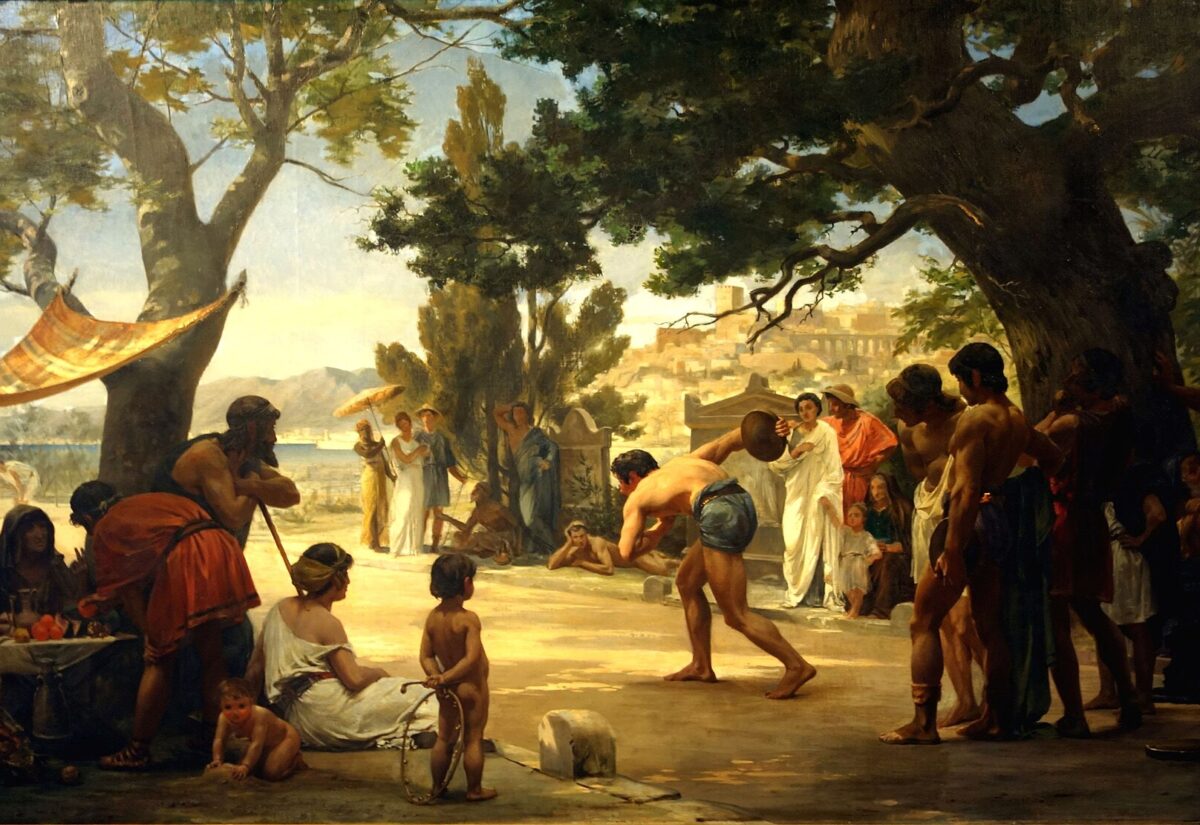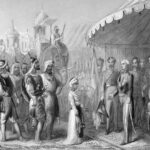Ancient Athletic Training Methods Too Extreme For Modern Olympians
- Gail Stewart
- May 18, 2025
 Public Domain
Public DomainThe Ancient Olympic Games weren’t just the birthplace of competitive sport—they were also the testing ground for some of the most punishing and intense training regimens in history. Held every four years in honour of Zeus, these games demanded far more than athletic ability. Athletes were expected to embody physical perfection, mental resilience, and unwavering discipline. Fame and glory awaited the victors, but the path to get there was brutal. The training involved rituals, self-denial, harsh routines, and the sort of pain tolerance that would make even today’s toughest Olympians think twice. Here are some of the most intense and frankly unthinkable training methods from ancient Greece that would be considered far too extreme in the modern sporting world.
Nude training under the sun
In ancient Greek gymnasia, clothing was considered unnecessary and even counterproductive. Athletes trained nude, outdoors, often under the blazing Mediterranean sun. This wasn’t just about tradition; it was seen as a way to toughen the body and allow maximum freedom of movement. It also served a symbolic role, with nudity reflecting ideals of purity, discipline, and pride in the human form.
Training like this meant constant exposure to the elements, with no protection from the sun, the heat, or the dust. There was no such thing as sunscreen, and skin damage was inevitable. Today’s training environments are climate-controlled and sanitised, designed for performance and safety. In ancient Greece, however, it was sweat, sunburn, and grit—literally.
Oiling up and dusting down
Before beginning their workouts, athletes would lather themselves in olive oil to protect the skin, enhance flexibility, and show off their physiques. Afterward, they’d scrape off the mixture of oil, sweat, and dirt using a curved metal tool known as a strigil.
This practice wasn’t just about vanity. It was considered essential for hygiene, though by today’s standards it probably spread as much bacteria as it removed. According to The British Museum, the strigil was a key part of the athlete’s kit, and the oil-scraping ritual became almost ceremonial. Compared to today’s spa-grade recovery treatments and sterile locker rooms, it was a rather gritty affair.
Blood sports as conditioning
Combat sports like boxing and pankration were more than mere competitions. They were also warlike spectacles, and the training matched. Ancient boxing involved hard leather straps wrapped around the knuckles, and in some periods, metal studs were added. Pankration, a no-holds-barred blend of wrestling and striking, was even more brutal. The only forbidden moves were biting and eye gouging.
Training sessions were just as vicious as the competitions, often involving prolonged sparring that continued until one man gave up, or passed out. These contests had little to do with finesse. In reality, they were about domination. Cuts, broken bones, and concussions were common. Today’s strict rules, protective gear, and medical oversight would have seemed like weakness to these ancient warriors.
Spartan-like diets and extreme fasting
Ancient athletes often adhered to rigid, restrictive diets. There were no sports nutritionists—just anecdotal evidence and personal experimentation. Wrestlers reportedly ate massive quantities of meat to gain size and strength, while runners kept lean by living on figs, cheese, barley bread, and honey.
Some athletes engaged in fasting or stuck to single-food diets to purify the body. Others would eat raw eggs or even ash, believing it improved stamina. While modern sports nutrition focuses on balance and performance optimisation, ancient Greek diets could be erratic, extreme, and occasionally harmful. The goal wasn’t just nourishment; it was discipline.
Pain-based endurance routines
Training wasn’t just about skill. It was also about suffering. Endurance drills included long-distance running on rocky terrain under the hot sun, lifting heavy stones, or repeating combat drills to the point of collapse. There was no emphasis on rest days, hydration, or cooldowns. If you were sore, you pushed through. If you were injured, you wrapped it up and carried on.
Without modern understanding of muscle recovery, athletes were often overtrained and left to manage pain with herbal remedies or sheer willpower. Overexertion wasn’t a danger to avoid—it was a goal to reach.
Early-age athletic indoctrination
In cities like Sparta and Athens, boys were enrolled in physical training programmes from as young as seven. For Spartans, in particular, the goal was to breed resilience, obedience, and combat readiness. Training involved not just sport but hardship. Children were deliberately underfed, punished harshly, and made to exercise through fatigue.
By the time a boy reached his teens, he would have been subjected to years of physical conditioning and mental hardening. The idea was to mould them into unbeatable warriors and athletes. Today, safeguarding laws and youth protection policies make such practices unthinkable.
Philosophical and moral conditioning
Training in ancient Greece wasn’t only physical—it was tied deeply to philosophy. Athletes were taught that their bodies were temples and that to dishonour them through indulgence, laziness, or dishonesty was to disgrace the gods. Many trained under the guidance of philosophers or were required to study moral conduct alongside athletic drills.
They were also expected to live ascetically: no indulgent food, no sex, no distractions. This blending of ethics and physical excellence wasn’t optional—it was demanded. In modern sport, while mental conditioning is important, personal freedom and emotional well-being are also prioritised. The ancient system was far less forgiving.
Sleep deprivation and isolation
In the lead-up to the Games, some athletes were subjected to months of isolated training in designated Olympic camps. They were cut off from family, friends, and normal life. Sleep schedules could be disrupted deliberately to harden the mind, and night-time drills weren’t uncommon.
Isolation was meant to eliminate distraction and forge complete focus. Today, we understand that sleep, social support, and mental rest are crucial to peak performance, but the ancients believed that toughness came from sacrifice.
No gear, no protection
While modern athletes have everything from custom footwear to joint supports and breathable compression fabrics, ancient athletes had nothing of the sort. Bare feet were the norm, and injuries to toes, heels, or ankles were considered inevitable.
In javelin and discus, misjudged throws caused frequent accidents. In chariot racing, a popular but perilous sport, fatal crashes were common. Competitors accepted risk as part of the spectacle. Where modern sport seeks to prevent injury, ancient sport used it to sort the strong from the weak.
Modern Olympians are undoubtedly impressive, but their ancient counterparts existed in a world where pain, danger, and denial were integral to success. These training methods would never be accepted today, and for good reason, but they formed the brutal foundations of athletic competition. Looking back, it’s easy to admire their resilience, even as we breathe a sigh of relief that modern sport has evolved beyond such extremes. Still, the legacy of those ancient training grounds echoes in every sprint, throw, and lift seen on today’s world stage.



